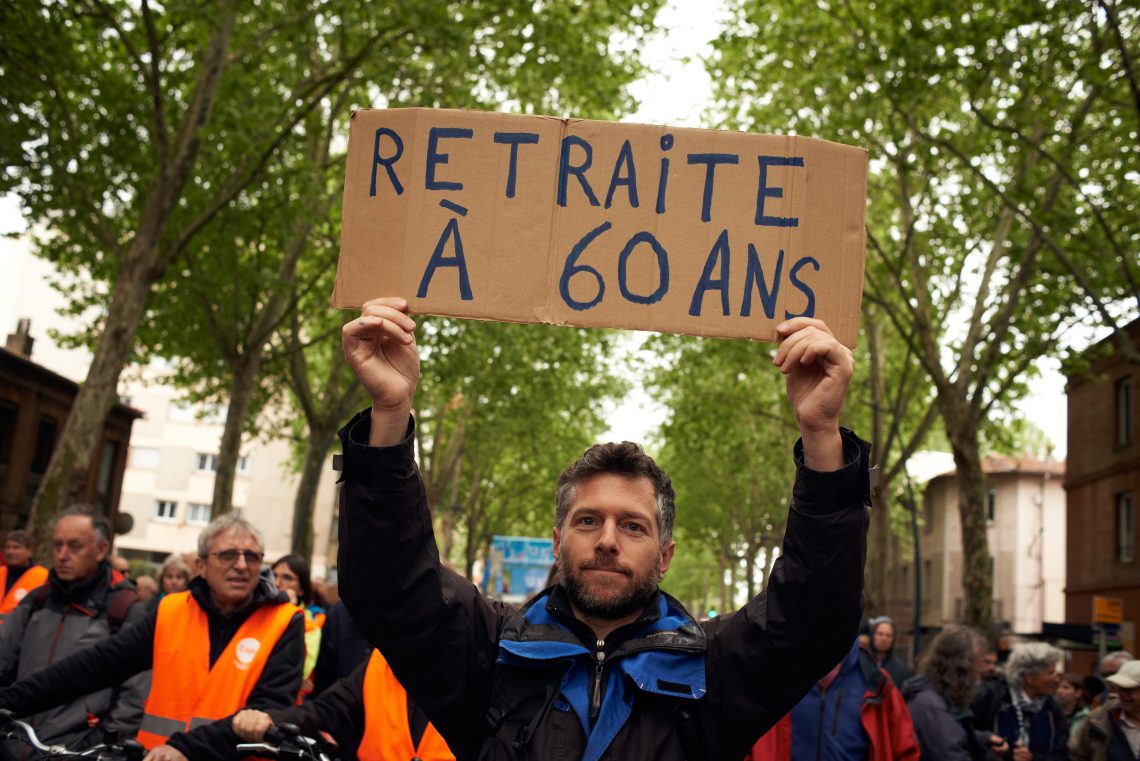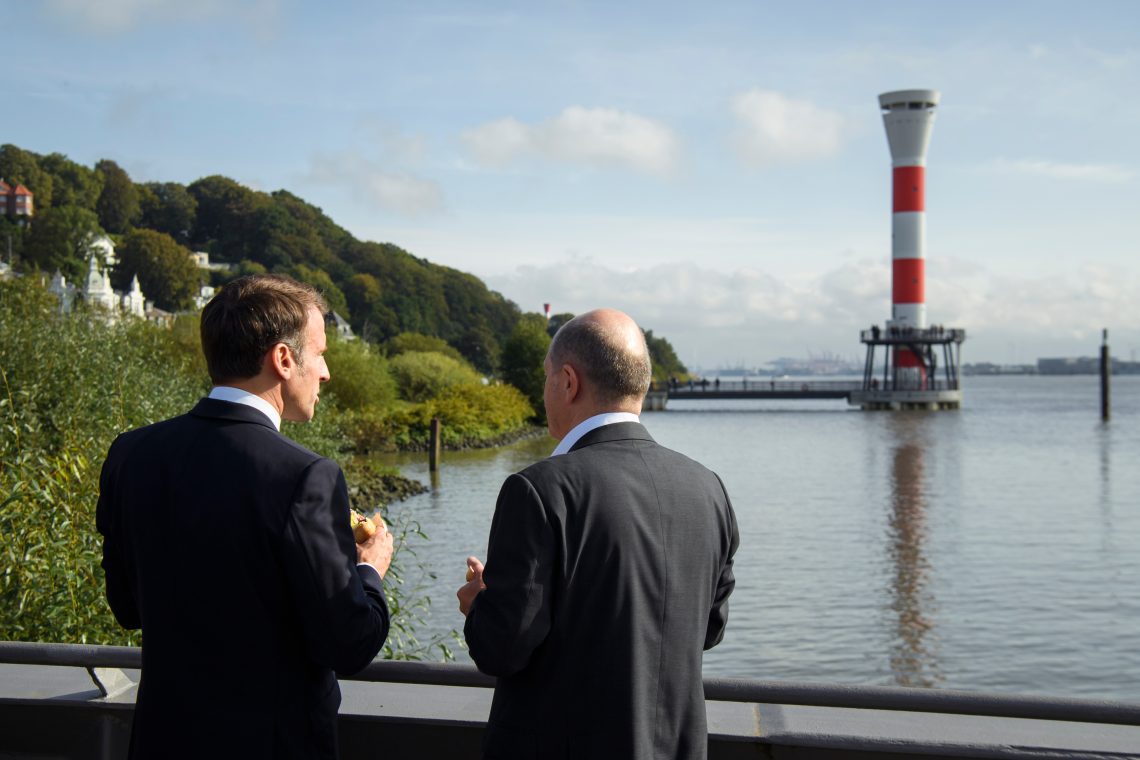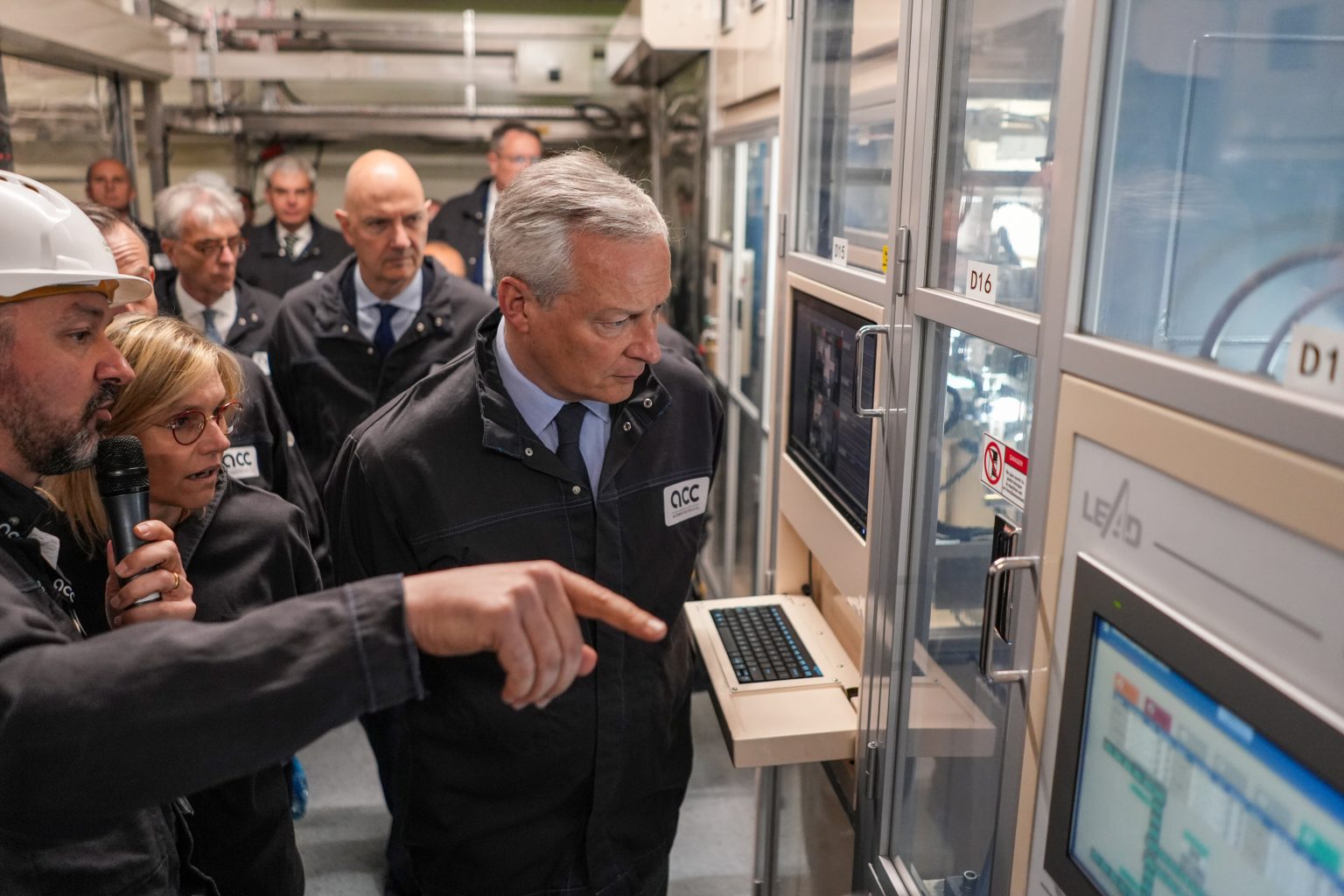The many challenges facing France’s reindustrialization
Over the past three decades, two and a half million industrial jobs have been lost in France. The share of industrial manufacturing in GDP declined to barely 10 percent in 40 years, despite a recent moderation. While such a fall is a natural developmental process in the tertiarization of economies, it has been less drastic in similar countries (e.g., declining to 21 percent in Germany). For France, it has translated into a growing trade deficit over the years, to a record of 164 billion euros in 2022, reflecting issues of both competitiveness and attractiveness.
A series of laws (such as the Loi Travail in 2016 and the Loi Pacte in 2019) have tried to reverse these trends by introducing more labor market flexibility, somewhat reducing business taxation to stimulate investment, easing business creation and financing and trying to mitigate regime uncertainty. In late 2021, the five-year, 54 billion-euro “France 2030” investment plan was launched to boost the economy and support innovative technologies and the green transition.
Last May, French President Emmanuel Macron announced his intention to accelerate the reindustrialization process with new measures. A “Green Industry” law proposed by his government has passed both chambers of Parliament and should be adopted in October. Besides the obvious concern for the future economy, it is hard not to see a message being sent to investors – especially as foreign entities hold some 51 percent of the country’s massive public debt (now 3 trillion euros), and after Fitch Ratings downgraded France to AA- in late April.
The benefits of industry
Economists typically see industry as a source of productivity gains, given the potential economies of scale within larger production units, and the economies of specialization within larger industrial networks (more specialized industrial businesses, if not necessarily bigger ones). This usually leads to higher profits and higher wages, positively contributing to GDP growth. Research and development (R&D) is typically industrial and leads to innovation, which also translates into productivity gains and increases in GDP per capita.
While not the only path to growth and development (see New Zealand’s agriculture-based development strategy), industry represents a potential source of rapid growth – as demonstrated by the United Kingdom in the 18th and 19th centuries, Germany and the United States in the 19th and 20th centuries, and Asia’s tigers and dragons most recently.
Reindustrialization without an existing secure and stable energy supply might prove complicated.
Deindustrialization of the private economy – if not offset by increased growth in other sectors, such as in the UK since the 1980s – can be potentially destructive. Not only are industrial activities, jobs and territories lost, but the process also affects other sectors that operate upstream of industry, like services. Deindustrialization is often seen as potentially weakening GDP per capita growth.
Societies with a prodigal welfare state can compensate for this decline with increased public spending, taxes and debt, but that cannot last for long. It eventually becomes a costly burden to the remaining industrial base. Finally, crises such as the Covid-19 pandemic or the war in Ukraine have underlined that a lack of an industrial base can sometimes create dependencies. Hence, the link between reindustrialization and recent efforts around strategic autonomy and sovereignty.
Administrative reform
A serious problem for industrial investors is posed by France’s many bureaucratic and regulatory hurdles, which create disincentives to develop industrial projects. Securing an industrial permit typically takes twice as long as in Germany. President Macron has pledged to reduce administrative delays in obtaining permits for industrial sites from 18 to 9 months. The involvement of various administrative departments would work in parallel, instead of in sequence. A special policy for projects of national interest could make the process even faster. Given the stringent environmental regulations around land use, the plan is also to make current industrial wastelands available for potential new projects, and to speed up installation.
These changes, while very much welcome for businesses – and likely still quite modest in terms of efficiency – will still require a serious reform of administrative processes. A new kind of coordination among departments will be required (beyond the simple directive to work in parallel rather than in sequence), along with incentives for new civil servants. Given France’s record on such administrative reforms, this might seem like wishful thinking. In 2013, President Francois Hollande launched a similar “simplification shock,” with disappointing results.
When it comes to rehabilitating existing wastelands, the question will be: which ones? France now has about 50,000 of them. How will candidates be decided? And who will pay for them – especially with the country’s current financial woes? There are no obvious answers to these questions.
President Macron has pledged 700 million euros to support “jobs of the future,” along with training in those industries where manpower is lacking. Various recent reforms have tried to address the issue, often making it worse. Three factors stand in the way of the president’s wishes.
First is a common issue facing many European countries: baby boomers have left the job market and the new generation is not sizable enough to replace them. Transmitting knowledge, competencies and talent also remains difficult. Besides high labor costs, due to France’s level of social taxation on work, businesses’ biggest challenge is to find competent labor.
Second is the decline of education standards, especially the catastrophic drop-off in math capabilities since it was removed from several A-level curricula in 2019. A modest reintroduction of math in 11th grade (a minimum of one and a half hours per week) this year will not change much. A country simply cannot reindustrialize and develop innovation without a population sufficiently trained in math and the benefits of abstract thinking. And the case of math is just the reflection of a broader educational issue, with similar concerns in subjects like history or the French language.
Besides high labor costs, French businesses’ biggest challenge is to find competent labor.
Third, vocational training in France is problematic. For years, it has been regarded as a sideline for failing pupils in high school and the pre-high school level, not as a valid path to train technicians. The French vocational system is managed by bureaucracy – rather than by businesses themselves, as in Germany or Switzerland – despite recent attempts to improve the curriculum. No wonder it has been unsuccessful at attracting or fostering the technical talents required for a strong industrial rebound.
Coupled with the fact that industry and industrial jobs are not well promoted in schools, these dynamics combine to create a human capital deficit. Without a drastic turnaround going beyond the recent reforms, in both general education standards and vocational training, reindustrialization will not be possible. And, since education takes years to bear fruit, any hope of a short-term rebound is very optimistic.
Cuts and subsidies
Mr. Macron has also promised tax cuts for businesses. Corporate taxes were already reduced from 33 to 25 percent during his first term, and during the 2022 presidential campaign, he pledged to suppress “production taxes.” Indeed, alongside social taxes, taxes such as the contribution on added value (CVAE) can represent a substantial burden for big businesses, and thus for industrial projects. They are also seen as harmful to the economy, as they are disconnected from actual profits. However, given France’s financial problems, Minister of the Economy Bruno Le Maire announced that the complete suppression of the CVAE will be postponed from 2024 to 2027.
Of course, subsidy programs and tax credits can stimulate green industry (hopefully generating up to 20 billion in investment); while savings, through life insurance funds or “complementary pension” systems, can be channeled to finance the green agenda. While some will benefit, this will probably induce a bureaucratization of financing choices, posing the dilemma of “picking winners.” Coupled with preferential credit allocation, it presents the possibility of cronyism and taxpayer-financed risk-taking – already an issue in technocratic France.
On the private side, the financing of gazelles (small and medium tech companies that evolved from start-ups) and unicorns (those worth more than a billion euros) have long been a challenge in France. Business angels and venture capital have been reluctant to support these businesses, especially for tax reasons.
The situation has much improved under President Macron. Amounts raised by French small and medium-sized tech enterprises, for example, increased from a miserable 2.5 billion euros in 2017 to 13.5 billion in 2022, nearly approaching Germany’s 16 billion in 2021 (but only 10 billion in 2022). Of course, the UK is still far ahead with 27.5 billion in 2022 (from 32 billion in 2021). The French investments were mainly limited to internet, software and fintech companies.
One way to increase green companies’ turnover is to reserve public procurements for local companies. While not strictly chauvinistic, a new law would apply a “mirror clause” for international competitors of French and European companies in terms of their green credentials, especially the carbon footprint of the production process – and accordingly, for green technologies themselves (like wind and solar). Unfortunately, this is the logical retaliation against elements of the U.S. Inflation Reduction Act or analogous Chinese policies, and could contribute to a rise in protectionism and the associated risks of lacking certain essential supplies.
Finally, while the sustainability effort is largely about creating more “green” energy, a decade of uncertainty with regard to nuclear energy and other troubles around green alternatives has put the national grid under serious tension. Even in the energy industry itself, reindustrialization without an existing secure and stable energy supply might prove complicated.
Scenarios
A first likely scenario would see France continuing current trends despite good intentions and optimistic speeches from policymakers. The major challenges of administrative reform, education reform and financing issues are not seriously addressed, thanks to inertia and inevitable delays in policy outcomes. The upcoming recession in Europe and France makes things even worse, both for industrial activity and public deficits – even further slowing private and public investment for reindustrialization. France slowly continues its fall, but still benefits from the trust of foreign investors (albeit at the price of increasing sovereign bond interest rates).
A second likely scenario begins with a serious economic crisis caused by an upcoming global recession, with no reindustrialization in the short term and a disastrous impact on public finances. Investors get nervous, and a combination of rating downgrades and sovereign bond rate increases end up generating a sovereign bankruptcy. With France’s public debt the largest in the eurozone, a bailout is not possible. The country faces the need for radical treatment, like Sweden in 2012. This moves the economy toward prioritization in public spending and more favorable policies for entrepreneurship. While strikes and social unrest erupt in the early stages, the crisis solves some of the challenges of accountable spending, as well as those of reindustrialization within a few years.
A third, less likely scenario sees positive results in the medium term from the current efforts to reindustrialize the country. The impact of the upcoming recession in the short term is negligible. There is resistance to change through strikes and social unrest, but the government is gradually able to convince the public of the necessity of reforms through more accountability.
This report was originally published here: https://www.gisreportsonline.com/r/france-reindustrialization/
































